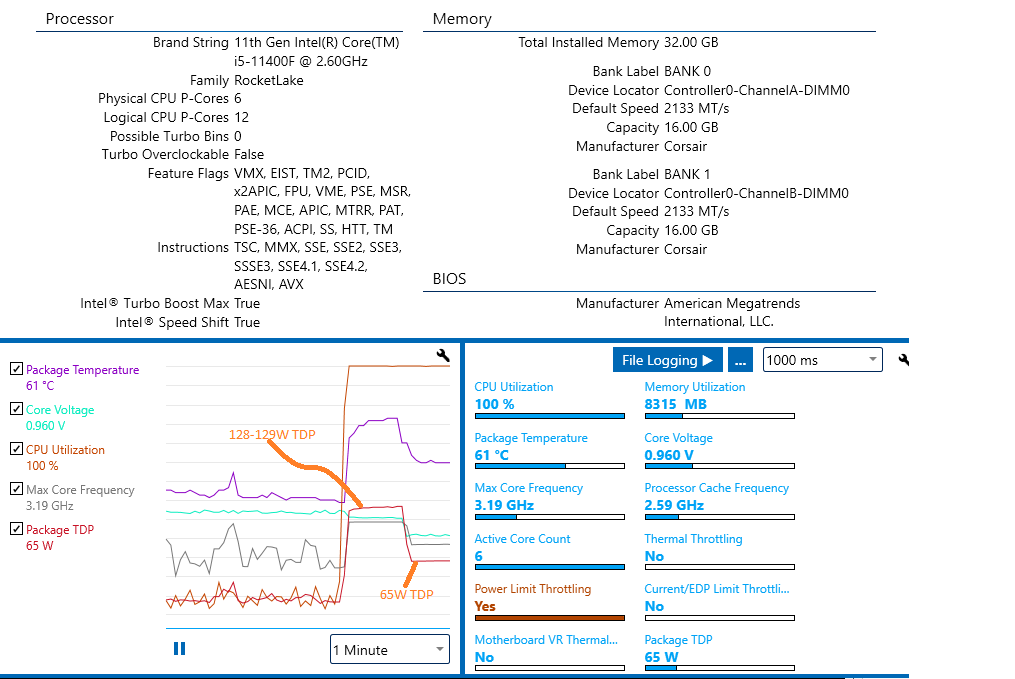I had thought a few months ago (when I did this build) that my 300W PSU would be sufficient, however, I have been reading some recent posts on this board about newer GPU's causing power spikes (eg. this thread: https://hardforum.com/threads/will-my-old-psu-be-enough-for-this-build.2024161/) and so I am becoming a bit more concerned about the adequacy of my existing PSU.
I had originally used the Shuttle PSU calculator to determine my system's expected power consumption and this is what I came up with:
https://global.shuttle.com/support/power?productId=2344

BTW, note that I have a GTX 1650 Super (not available on the dropdown) which has a TDP that is 20W lower than the 1060 and so the total usage for my system should theoretically be 262W not 282W shown above. I figured that being below 90% rated capacity should be enough safety factor but I would like to get your thoughts here.
Note also that I am using a CyberPower UPS with sinewave power output. It obviously won't save the PSU from power spikes from hardware in the PC but my thoughts are that it should reduce the risk to the PSU of utility-side voltage spikes.
If there are concerns with the 300W PSU, I can upgrade to a 500W Shuttle PSU. It's a bit pricey, however, it is on my long-term radar of planned upgrades regardless so that I can eventually get a better GPU. That said, if there are risks of overloading this PSU with my existing components, then I will prioritize getting the PSU upgrade done sooner rather than later.
Thanks a lot.
I had originally used the Shuttle PSU calculator to determine my system's expected power consumption and this is what I came up with:
https://global.shuttle.com/support/power?productId=2344

BTW, note that I have a GTX 1650 Super (not available on the dropdown) which has a TDP that is 20W lower than the 1060 and so the total usage for my system should theoretically be 262W not 282W shown above. I figured that being below 90% rated capacity should be enough safety factor but I would like to get your thoughts here.
Note also that I am using a CyberPower UPS with sinewave power output. It obviously won't save the PSU from power spikes from hardware in the PC but my thoughts are that it should reduce the risk to the PSU of utility-side voltage spikes.
If there are concerns with the 300W PSU, I can upgrade to a 500W Shuttle PSU. It's a bit pricey, however, it is on my long-term radar of planned upgrades regardless so that I can eventually get a better GPU. That said, if there are risks of overloading this PSU with my existing components, then I will prioritize getting the PSU upgrade done sooner rather than later.
Thanks a lot.
![[H]ard|Forum](/styles/hardforum/xenforo/logo_dark.png)

